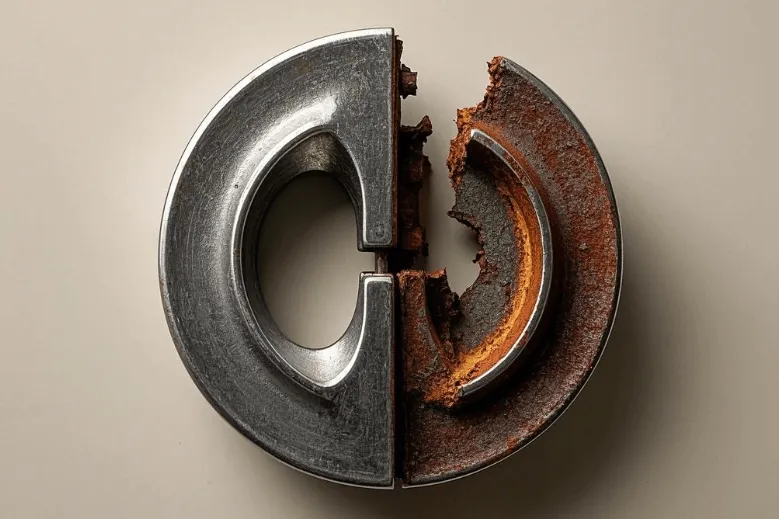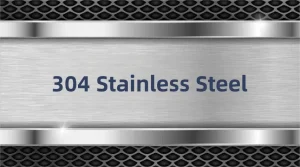Metals are widely used in many industries. Product designers often use corrosion-resistant metals in various applications, from aerospace parts, marine hardware, musical instruments, heat exchangers to structural components.
Although these metals have excellent heat resistance and structural strength, their corrosion resistance can vary.
Therefore, it is essential to use metals with the best corrosion resistance for specific needs.
This article will detail several common corrosion-resistant metals.
What Are Corrosion Resistant Metals?
Corrosion-resistant metals are materials that have a strong resistance to chemical breakdown caused by moisture, oxygen, or other substances. They do not rust.
These metals (such as stainless steel, aluminum, titanium, and certain alloys) form protective oxide or passivation layers on their surfaces to prevent degradation.
This feature makes them ideal for use in harsh environments like marine, chemical processing, and outdoor construction, where durability and longevity are crucial.
Common Corrosion Resistant Metals
There are many types of corrosion-resistant metals, each with unique properties and uses.
Aluminum
Aluminum is a standard metal used in many applications. It has excellent corrosion resistance due to the passivating oxide layer that forms on its surface.
1xxx, 3xxx, and 5xxx aluminum alloys show the strongest corrosion resistance, though most aluminum alloys in this series offer high chemical resistance.
1xxx Series: This series contains up to 99% pure aluminum and offers excellent corrosion resistance in typical applications.
3xxx Series: This series uses manganese as the main alloying element, which makes its corrosion resistance lower than 1xxx aluminum. However, it is highly ductile and well-suited for cold-forming applications that require corrosion resistance.
5xxx Series: This series has high manganese content, providing similar corrosion resistance to 3xxx aluminum.
6xxx Series: This series strikes a balance between corrosion resistance, strength, and machinability, making it popular for structural applications.
High-Temperature Alloys
These are specially designed high-performance metals that offer excellent corrosion resistance and mechanical properties at high temperatures. These alloys are used in energy and aerospace applications.
Cobalt-based high-temperature alloys: These have excellent heat-corrosion resistance, with a higher melting point than other high-temperature alloys.
Nickel-based high-temperature alloys: These are the most commonly used high-temperature alloys because they are usually cheaper than cobalt-based alloys. They offer high strength and excellent corrosion resistance.
Iron-based high-temperature alloys: These alloys have high corrosion resistance and strength at room temperature. They are more cost-effective than nickel-based and cobalt-based alloys.
Copper and Copper Alloys
Pure copper and its alloys are known for their corrosion resistance. Common copper alloys include bronze (copper and tin) and brass (copper and zinc).
Brass:
Brass is a copper-based alloy with zinc as the main element, sometimes with small amounts of lead, iron, or aluminum.
Brass has good corrosion resistance in most atmospheric environments.
Copper reacts with oxygen in the air to form a thin copper oxide protective layer, which slows further oxidation. Zinc in brass helps enhance its corrosion resistance by forming a dense zinc salt layer, which protects the metal.
Bronze:
Bronze is primarily a copper-tin alloy and has good corrosion resistance overall.
The tin in bronze helps form a stable alloy with copper, improving corrosion resistance. In air, freshwater, and seawater, bronze forms a dense passivation layer that prevents further corrosion, protecting the metal inside.
Some ancient bronze artifacts in China, buried for thousands of years, are still well-preserved, showing the excellent corrosion resistance of bronze.
Stainless Steel
Stainless steel is a commonly used corrosion-resistant metal. The elements in its alloy determine its level of corrosion resistance.
Stainless steel has excellent resistance to corrosion, making it suitable for environments with high temperatures and corrosive chemicals.
Chromium in stainless steel forms a protective chromium oxide passivation layer, preventing degradation.
Manufacturers use various stainless steel alloys in industries like food processing, chemical processing, automotive, pharmaceuticals, and construction. These alloys are categorized based on their microstructure into three main types:
Austenitic Stainless Steel:
These alloys are typically 300 series stainless steels. Common grades include 304 and 316 stainless steel.
Austenitic stainless steel usually contains 18% chromium and 8% nickel, along with small amounts of manganese and nitrogen. These alloys are among the most corrosion-resistant metals available.
Ferritic Stainless Steel:
Ferritic stainless steels belong to the 400 series.
These alloys usually contain about 27% chromium, which improves their durability. They have lower carbon content, making them more ductile.
A typical example is 430A stainless steel.
Martensitic Stainless Steel:
These are 400 series alloys, such as 420A stainless steel. They contain 18% chromium, higher carbon content, and no nickel.
Martensitic stainless steel is harder than other corrosion-resistant metals, but it is less corrosion-resistant compared to 300 series steel.
Titanium
Titanium is widely used in the aerospace industry due to its excellent strength-to-weight ratio. It also has outstanding corrosion resistance, which makes it useful in industrial applications.
Like other corrosion-resistant metals, titanium forms a passivation oxide layer on its surface, which is key to its corrosion resistance.
However, if the oxide layer is damaged, it will quickly reform in the presence of moisture and oxygen.
Due to its excellent resistance, titanium is commonly used in applications like the chlor-alkali industry, where it resists chlorine solutions.
Galvanized steel is a metal with anti-rust properties. It has a zinc coating that prevents rust and further oxidation. This zinc layer blocks oxygen and water from reaching the steel underneath.
Galvanized carbon steel offers excellent corrosion resistance, aesthetic appeal, and high recyclability.
Manufacturers use galvanized steel in automobile parts, building components, and many other applications that require high corrosion resistance.
Methods to Improve Corrosion Resistance of Metals
If a metal can withstand the negative effects of harsh environments, it is considered corrosion-resistant. Manufacturers and product designers often follow specific procedures to improve a metal’s corrosion resistance, as some metals are more resistant than others. Here are some standard methods:
Anodizing
This electrochemical method forms a controllable oxide layer on metals like titanium and aluminum.
Anodized aluminum improves corrosion resistance and can also be colored for aesthetic purposes.
Surface Polishing
Polishing the surface of a metal helps remove defects, creating a smoother surface and reducing further corrosion.
Surface polishing improves both corrosion resistance and appearance.
Spray Painting
Spray painting creates a protective coating on the metal surface. This layer serves as a barrier to prevent corrosive elements and moisture from reaching the metal.
Proper surface preparation and the choice of the right paint or coating are essential for optimal results.
Electroplating
Electroplating is an electrochemical process where one metal is deposited onto another to improve the metal’s surface. The plated layer forms a protective barrier, enhancing corrosion resistance.
Common metals used for electroplating include nickel, chromium, and zinc.





